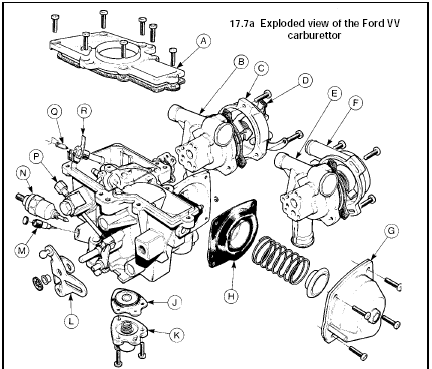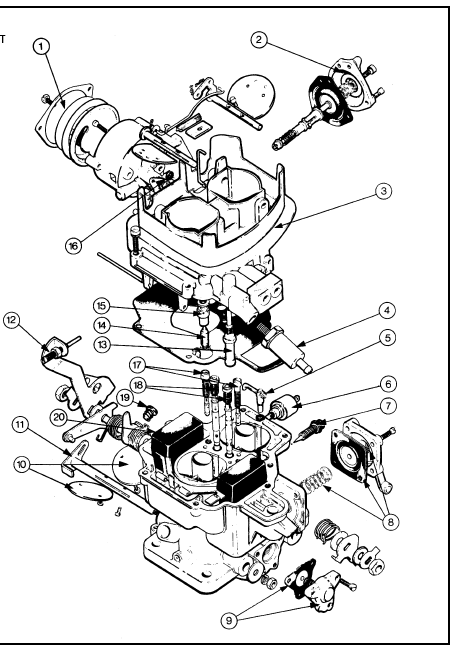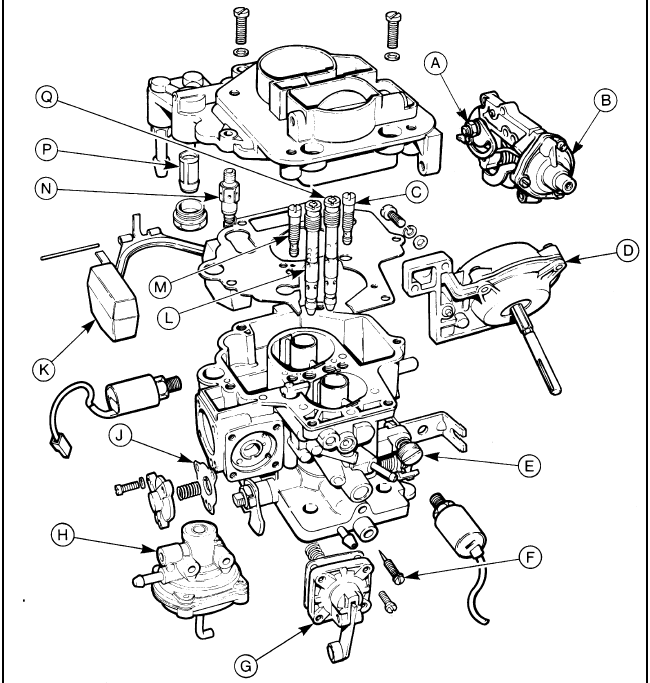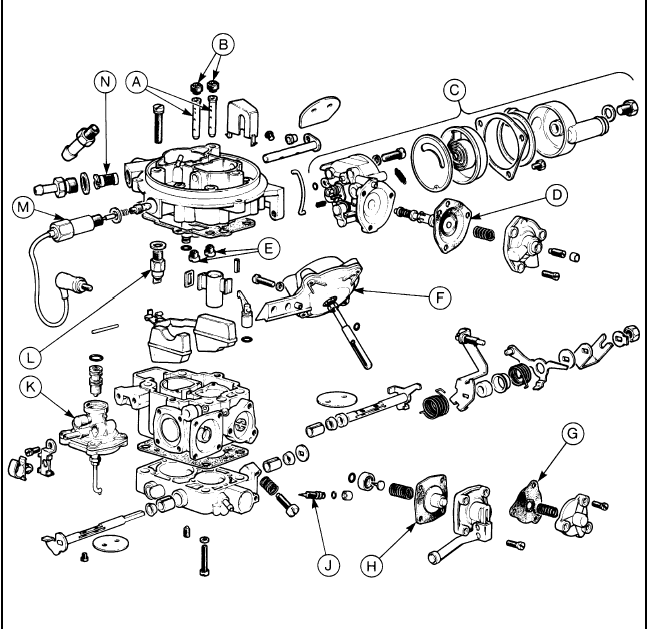Carburettor overhaul - general information
Faults with the carburettor are usually associated with dirt entering the float chamber and blocking the jets, causing a weak mixture or power failure within a certain engine speed range. If this is the case, then a thorough clean will normally cure the problem.
If a carburettor fault is suspected, always check first (where possible) that the ignition timing is correct, and that the spark plugs are in good condition and correctly gapped. Also check that the throttle cable is correctly adjusted, and that the air cleaner element is clean.
If careful checking of all the preceding points produces no improvement, the carburettor should be removed for cleaning and possible overhaul.
Complete overhaul of a carburettor is seldom required. It will usually be found sufficient to use a suitable carburettor cleaning agent to remove any fuel deposits and/or dirt. Follow the instructions supplied with the cleaning agent - most products can be used without removing the carburettor from the vehicle.
Blocked jets or internal passages can be cleaned using an air line.
If the carburettor is worn or damaged, it should either be renewed or overhauled by a specialist, who will be able to restore the carburettor to its original calibration.
Carburettor overhaul kits are available from a Ford dealer, but it is worth checking on the cost of a reconditioned or new unit before contemplating overhaul. Exploded views of the carburettors are provided as a guide for those wishing to carry out overhaul (see illustrations).

17.7a Exploded view of the Ford VV carburettor
A Top cover
B Manual choke unit
C Lever housing
D Choke cable bracket
E Automatic choke unit
F Bi-metal housing
G Air control vacuum
diaphragm housing
H Air control diaphragm
J Accelerator pump
diaphragm
K Accelerator pump cover
L Throttle linkage
M Mixture adjustment screw
N Anti-run-on valve solenoid
P Idle speed adjustment
screw
Q Fuel needle valve
R Float bracket

17.7b Exploded view of Weber 2V DFT carburettor - XR3 models
1 Choke housing cover
2 Vacuum pull-down assembly
3 Upper body
4 Fuel filter
5 Accelerator pump discharge tube
6 Anti-run-on valve solenoid
7 Mixture adjustment screw
8 Accelerator pump assembly
9 Power valve assembly
10 Throttle valve plates
11 Secondary throttle spindle
12 Fast idle adjustment screw
13 Fuel return connection
14 Fuel inlet needle valve
15 Needle valve housing
16 O-ring
17 Idle jets
18 Combined emulsion tube, air
correction and main jets
19 Idle speed adjustment screw
20 Float

17.7c Exploded view of Weber 2V DFTM carburettor - 1.4 litre models
A Manual choke assembly
B Vacuum pull-down unit
C Secondary idle jet
D Secondary venturi vacuum unit
E Idle speed adjustment screw
F Mixture adjustment screw
G Accelerator pump assembly
H Throttle kicker
J Power valve diaphragm
K Float
L Primary emulsion tube
M Primary idle jet
N Needle valve
P Fuel inlet filter
Q Secondary emulsion tube

17.7d Exploded view of Weber 2V TLD carburettor - 1.6 litre models
A Emulsion tubes
B Air correction jets
C Automatic choke assembly
D Vacuum pull-down diaphragm
E Main jets
F Secondary venturi vacuum unit
G Power valve diaphragm
H Accelerator pump diaphragm
J Mixture adjustment screw
K Throttle kicker (automatic transmission
models)
L Needle valve
M Anti-run-on valve solenoid
N Fuel inlet filter
See also:
Air cleaner air temperature control - description and testing
Thermostatically-controlled air
cleaner
1 On all pre-1986 models and certain models
from 1986 onwards, the air cleaner is
thermostatically-controlled by a vacuum
operated system to provide air at ...
Front direction indicator side repeater lamp - removal and refitting
1 Disconnect the battery negative lead.
Models up to 1987
2 To improve access, turn the steering onto
full lock.
3 Remove the relevant wheel arch liner.
4 Working under the wheel arch, depress th ...
Door handle and lock components - removal and refitting
Door exterior handle
Removal
1 Remove the door trim panel (Section 11).
2 Peel back the waterproof sheet as
necessary to gain access (see illustration).
13.2 Peel back the waterproof sheet for ...
